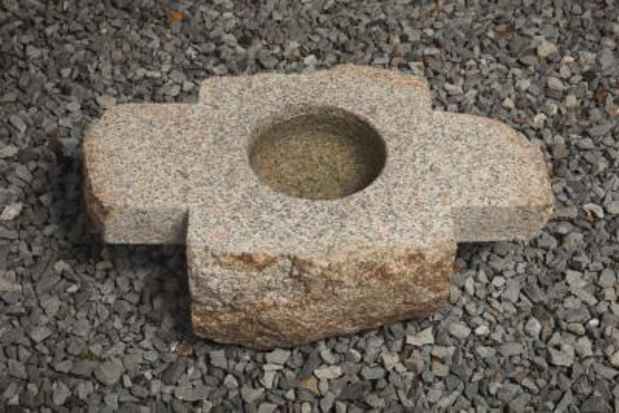“Highlights from the Collection: Noguchi Archaic / Noguchi Modern” Exhibition
The Noguchi Museum

This event has ended.
The only thing Noguchi loved more than the promise of the future was the sense of belonging to the Earth he derived from working with million and billion year old pieces of rock. Noguchi Archaic/ Noguchi Modern explores a stylistic wormhole that seems to link the ancient past and the distant future in his work.
This exhibition has two sources of inspiration outside Noguchi’s work. The first is an association that developed in the middle of the 20th century between the Stone Age and the Atomic Era when—after Hiroshima and Nagasaki—it seemed inevitable that atom smashing would culminate in our bombing ourselves, assuming we survived at all, back into the Stone Age. The association between technology and our possible return to a perfectly primitive state is perhaps best encapsulated in the German artist Joseph Beuys’ multiple Ein-Stein-Zeit, a blasted-looking picture of a rough basalt column lying on a floor, the perfect circle cut into one end of it a relic of human knowledge. Ein-Stein-Zeit, which translates literally as “a stone time,” is German for Stone Age. It is also a pun on the name of the German physicist popularly credited with devising the theoretical foundation for nuclear fission. “Einstein time” can be defined as a period in which, having invented the tools to destroy ourselves, humanity teeters on a knife edge between atom splitting and a return to rock bashing.
The second inspiration is the monolith at the center of Stanley Kubrik’s 2001: A Space Odyssey, which closely resembles both an Egyptian stele and an iPhone. Largely staged in clean, simple spaces—either black and limitless (outer space) or white and rectilinear (the interior of a space ship)—2001 helped establish the science fiction motif, since reproduced ad nauseum, that our departure from Earth in the future will be signaled, precipitated, or impacted by a mysterious Euclidian object probably left here by visitors sometime in the distant past. (Cue pyramids and stone circles.) The further you go into the past or the future, the simpler the design of everything becomes—because of course, the further away something is the harder the details that make it distinct are to discern. The funny thing about simplicity is that somewhere along the way it got tangled up with philosophy, took on moral significance, and in certain contexts—Brancusi’s studio, where Noguchi learned to square a block of stone, being a notable example—became a prescriptive design imperative. Simplicity of form is a foundational principle of abstraction and one of the most important techniques of ambiguity, as Noguchi demonstrates here working at both chronological extremes.
Media
Schedule
from March 05, 2014 to January 11, 2015